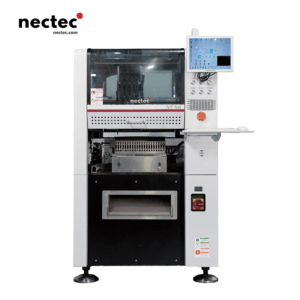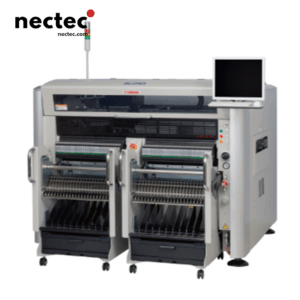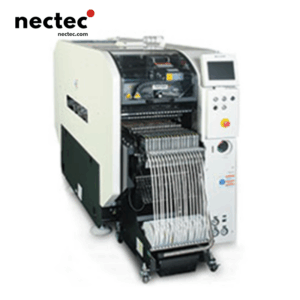In today’s fast-paced manufacturing environment, businesses are constantly seeking ways to improve efficiency, reduce costs, and increase productivity. One area that has seen significant advancements is the application of tag placement machines. These innovative devices are transforming the way products are labeled and tracked, ultimately enhancing supply chain management and operational workflows. In this article, we explore the capabilities of tag placement machines and the profound impact they are having on the manufacturing sector.
Understanding Tag Placement Machines
Tag placement machines are automated systems designed to apply labels and tags to products, packaging, and pallets. They utilize advanced technology, including robotics and vision systems, to ensure precise and consistent placement of tags. This automation reduces human error, enhances accuracy, and significantly increases the speed of the labeling process.
The Mechanism of Working
At the core of a tag placement machine lies its ability to interpret data and act on it swiftly. Equipped with sensors and cameras, these machines can identify the correct placement location for each tag based on predefined parameters. Whether it’s a shipping label on a box or a barcode on a product, these machines ensure that every item is labeled correctly.
Types of Tag Placement Machines
There are various types of tag placement machines available, tailored for different applications and industries. Some of the most common types include:
- Inline Labeling Machines: These machines integrate directly into existing production lines, allowing for seamless labeling during the manufacturing process.
- Print and Apply Systems: Ideal for high-volume operations, these systems print labels on demand and apply them automatically to products.
- Robotic Labeling Machines: Equipped with robotic arms, these machines can handle diverse label shapes and sizes, making them versatile.
Advantages of Using Tag Placement Machines
Efisiensi dan Kecepatan
One of the most significant benefits of tag placement machines is their ability to enhance efficiency. Traditional methods of labeling, which often involve manual work, can be slow and prone to errors. In contrast, automated tag placement machines can operate at high speeds, applying thousands of labels per hour with consistent accuracy. This efficiency can be a game-changer for businesses aiming to scale operations.
Pengurangan Biaya
Incorporating tag placement machines dramatically reduces labor costs associated with manual labeling. Additionally, by minimizing errors, businesses can avoid costs related to rework, product returns, and regulatory fines. Long-term savings on labels, materials, and operational overhead also contribute to a healthier bottom line.
Improved Tracking and Traceability
Accurate labeling is crucial for inventory management and supply chain visibility. Tag placement machines ensure that each item is properly tagged, allowing for better tracking throughout the production and distribution processes. This is particularly important in industries such as food and pharmaceuticals, where compliance with regulations and traceability is non-negotiable.
Aplikasi di Berbagai Industri
The versatility of tag placement machines makes them applicable across multiple sectors:
Makanan dan Minuman
In the food industry, labeling needs to be precise to ensure compliance with safety standards. Tag placement machines streamline this process, helping manufacturers maintain quality control while increasing production efficiency.
Obat-obatan
Similar to food production, the pharmaceutical sector has stringent regulatory requirements regarding labeling. Accurate tag placement ensures that drugs are correctly labeled, providing crucial information like dosage and expiration dates.
Manufacturing and Distribution
From automotive parts to consumer goods, manufacturing operations across the globe can benefit from automated tagging systems. These machines facilitate inventory management and reduce the risk associated with mislabeling products.
Tren dan Inovasi Masa Depan
The evolution of tag placement machines is ongoing, with new technologies set to further enhance their capabilities:
Integrasi dengan IoT
The Internet of Things (IoT) is opening new opportunities for real-time data collection and analysis. Tag placement machines connected to IoT systems can provide invaluable insights into production efficiency, tracking inventory levels, and forecasting needs, thereby facilitating smarter decision-making.
AI dan Pembelajaran Mesin
Artificial Intelligence (AI) and machine learning are set to revolutionize how tag placement machines operate. By analyzing vast amounts of data, these technologies can help refine tagging processes, predict maintenance needs, and even adapt to production changes instantly.
Tantangan dan Pertimbangan
While tag placement machines offer numerous advantages, companies must also consider potential challenges:
Biaya Investasi Awal
Implementing automated tagging systems often requires significant upfront investments. Businesses must weigh the long-term savings against initial costs when deciding to upgrade their systems.
Training and Adoption
Integrating new technology into an existing workforce can present challenges. Training employees to effectively operate and troubleshoot these machines is crucial to ensuring success.
Jalan ke Depan
As we move into an increasingly automated future, the role of tag placement machines in manufacturing will only continue to expand. Embracing these technologies not only positions businesses for increased efficiency but also enables them to adapt to the evolving landscape of industry demands.
By pairing tag placement machines with commitment to continuous improvement and innovation, companies can harness their full potential. The possibilities are limitless, paving the way for a smarter, more efficient manufacturing paradigm.










